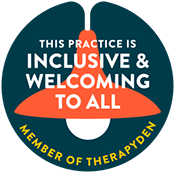
Somatic-based EMDR Therapy
What does somatic-based therapy mean?
Somatic therapy is a body-based approach to healing. Unlike traditional talk therapy, which focuses mostly on thoughts and emotions, somatic therapy helps you connect with how your body holds onto past experiences—especially trauma.
When we’ve gone through adversity or overwhelming events, the energy from those experiences can get stuck in our bodies. You might feel anxiety, panic, or emotional numbness without knowing why. That’s your nervous system responding the way it once had to for survival—even if the danger is long past.
These responses aren’t wrong or bad. They helped you get through. But when they keep showing up, even when they’re no longer needed, life can start to feel heavy, disconnected, or overwhelming.
That’s where somatic therapy comes in.
By gently tuning into your body in the present moment, you can begin to notice, understand, and shift the survival responses that are still running in the background. This isn’t just about coping—it’s about resolving what’s been stored deep inside.
In therapy together, we’ll work on:
-
Getting more present and aware of what’s happening in your body
-
Noticing sensations, thoughts, and emotions as they arise
-
Building resilience to move through pain and stuck energy
-
Learning how your body’s responses make sense
-
Reconnecting to your inner knowing and what feels true for you
You don’t have to keep carrying what’s been weighing you down. Healing is possible—and it starts by coming back to your body and your present moment.
Want to learn more about how EMDR supports this work?
Scroll down to read more, or click the Contact Me button below to schedule a free consultation.
What is EMDR?
EMDR stands for Eye Movement Desensitization and Reprocessing. It’s a therapy approach that helps people process and heal from painful or overwhelming experiences—especially trauma.
Think of it like this: sometimes when something distressing happens, your brain doesn’t get to “finish the story.” The memory, emotion, or body reaction stays stuck—on repeat—because it never had a chance to fully move through. EMDR helps your brain and body complete that unfinished story so it no longer runs in the background.
Originally, EMDR involved following a moving object with your eyes to activate both sides of the brain while recalling a difficult memory. Today, we often use gentle left-right tapping on the body instead—on the legs or arms—to create the same effect in a more grounding way.
This kind of rhythmic stimulation mimics REM sleep, the phase where our brains naturally process what we’ve experienced. It also helps regulate the nervous system and release stuck emotional or physical energy from past events.
When used alongside somatic therapy, EMDR makes it easier to work through distressing memories, emotions, or sensations—without becoming overwhelmed. Over time, triggers lose their grip, your nervous system responds more calmly, and you feel more present and connected with yourself and your life.
If you have any questions or would like more information, click the Contact Me button below to schedule free consultation.

